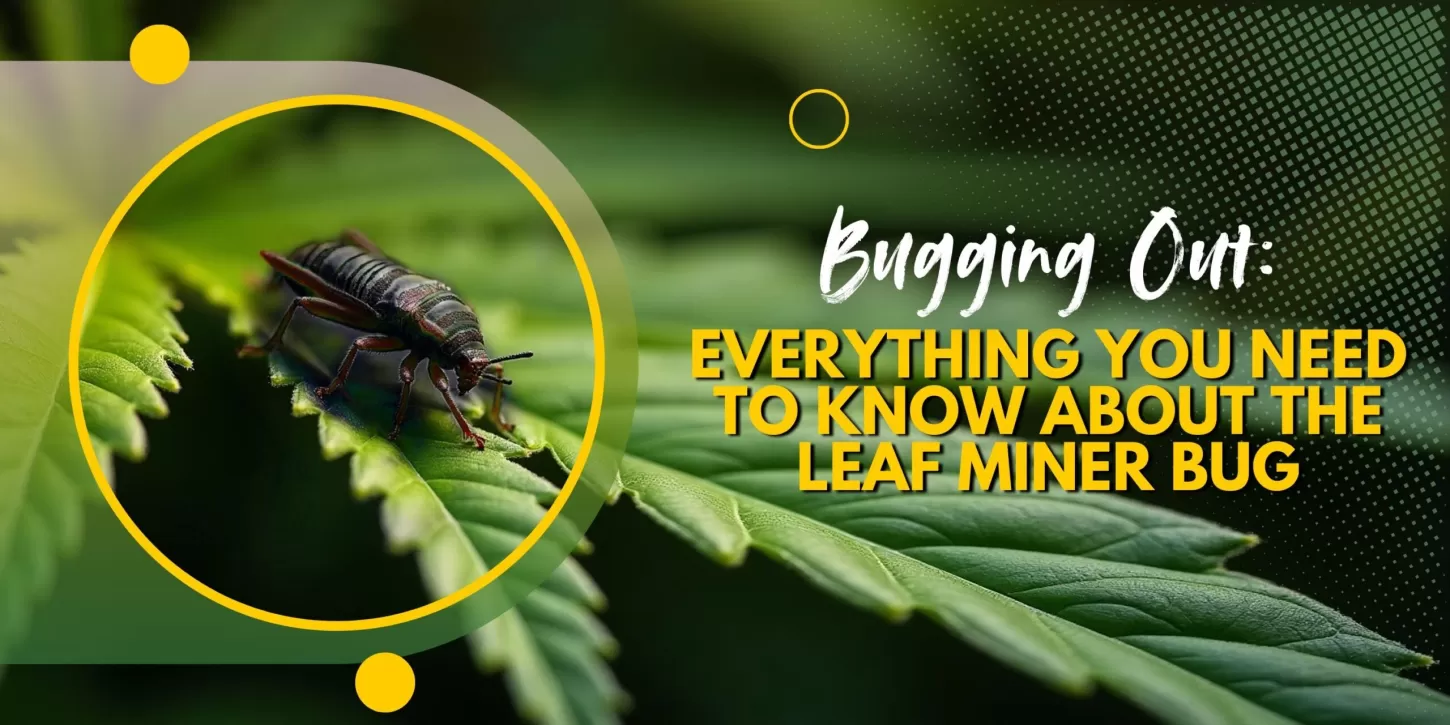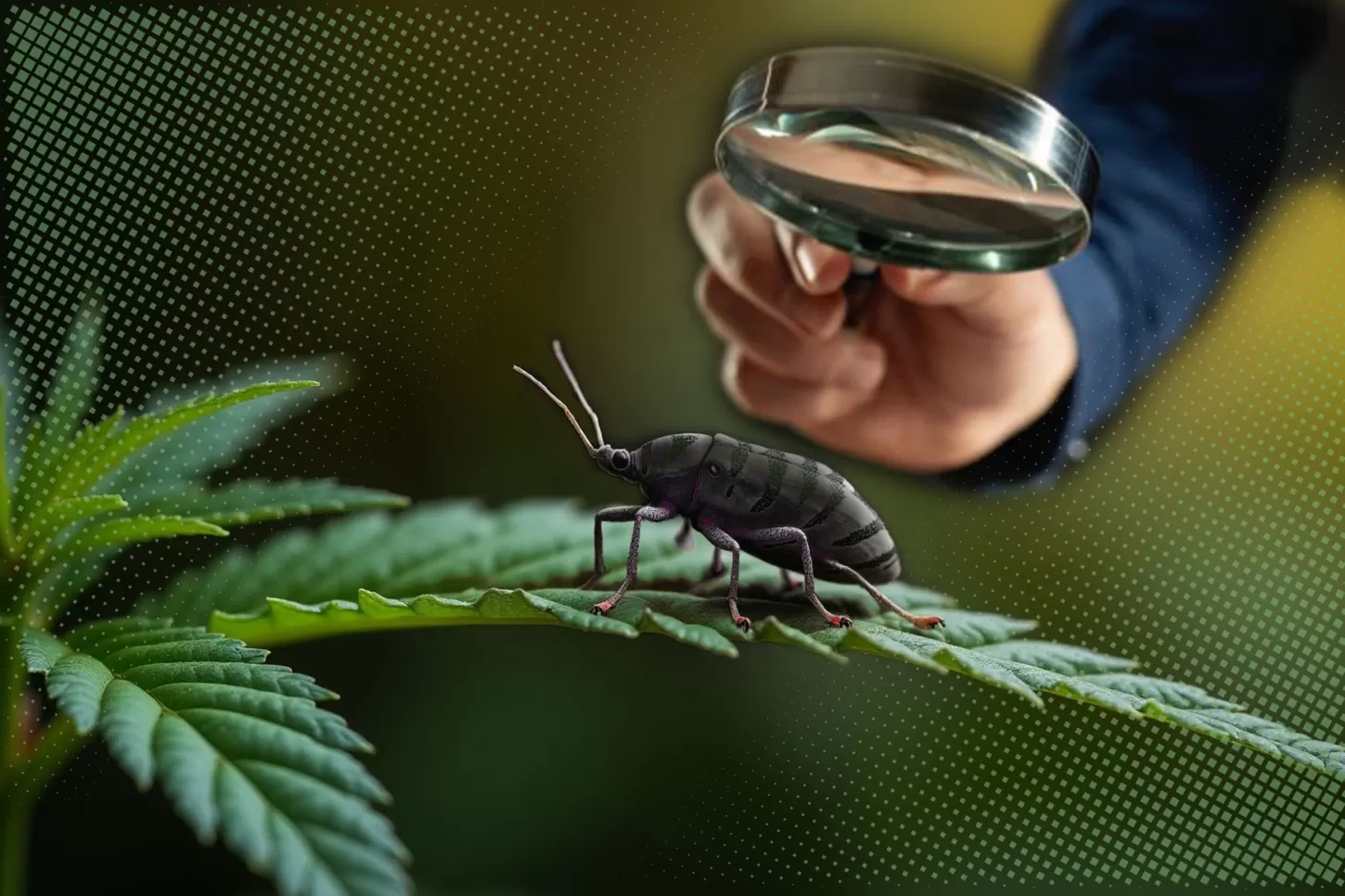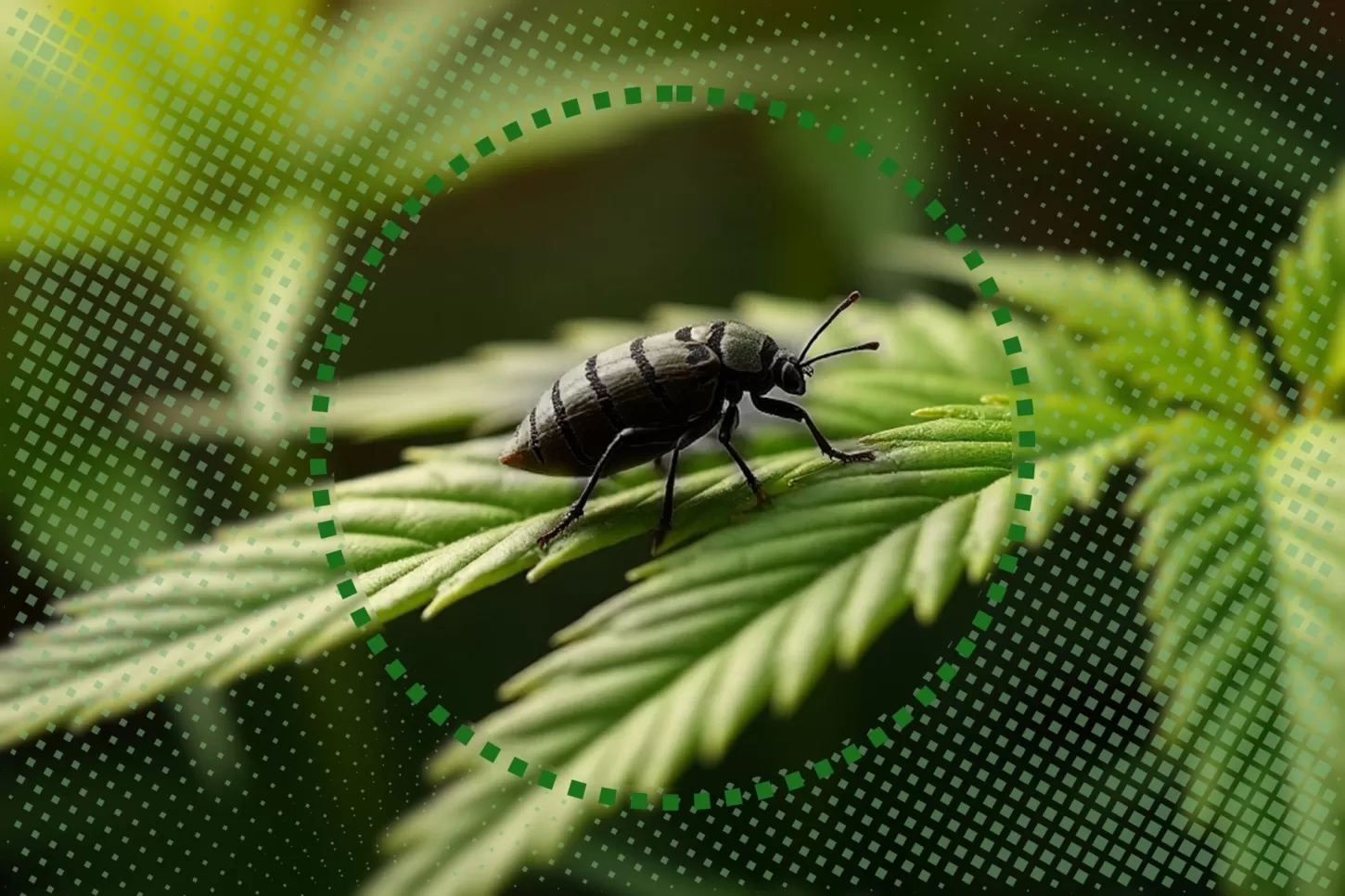Home / Bugging Out: Everything You Need to Know About the Leaf Miner Bug

If you’ve ever seen squiggly lines on your plant leaves, chances are you’ve encountered the annoying leaf miner bug. These little bugs might seem harmless, but they burrow into leaves, creating trails of destruction that can weaken your plants. Whether you’re cultivating veggies, flowers, or even cannabis, leaf miners can be a nuisance. Actually, leaf miner cannabis infestations are becoming increasingly problematic for home growers and hobbyists alike. This post explores what leaf miners are, how to catch them early, and easy methods to keep your plants safe without stressing out. Whether you’re a new gardener or an old green thumb, learning to identify and avoid these pesky bugs can save your crops—and your sanity. Let’s get in there and boot these bugs to the side before they burrow into your leaves!

When you consider pests in your garden or growing area, you may envision caterpillars eating leaves or aphids feeding on sap from your plants. But what about the pests that reside within the leaves? Say hello to the leaf miners—small but nasty insects that burrow through leaves and create tell-tale trails. For cannabis cultivators particularly, these quiet intruders can be a real nuisance.
So what do leaf miners appear like, and how do you eliminate them before they transform your green leaves into Swiss cheese? In this guide, we will delve deep into identifying, understanding, and eliminating leaf miners, with a special emphasis on leaf miners’ cannabis damage.

Leaf miners are not one species, but a blanket term for the larvae of a number of insects—usually moths, flies, sawflies, or beetles. What do they have in common? Their offspring tunnel within leaves and eat the plant material between the top and bottom surfaces, leaving behind wiggly trails in the process.
What’s particularly clever is that the adult insects themselves aren’t typically the problem—it’s their children that do the dirty deed. The adult lays eggs on or in the leaf, and the larvae hatching and start chomping their way through the foliage from the inside out.
Spotting the adult leaf miner insect isn’t always easy, especially since they vary by species. However, most adult leafminers are very small—usually less than 3mm in size—and resemble tiny black flies, moths, or beetles. They’re discreet and often go unnoticed.
But here’s the real giveaway: the trails on the leaves.
If you’re wondering “what do leaf miners look like,” the answer lies in these distinctive signs:
You may also notice tiny black dots inside the trails—this is frass, or insect dung. Yes, they’re not just eating their hearts out in there, they’re also leaving little gifts behind.
Cannabis isn’t immune to these sneaky leaf chewers. Leaf miners’ cannabis infestations, on the contrary, are more prevalent than most growers know, particularly in outdoor and greenhouse grows.
When leaf miners attack your cannabis crop, the damage isn’t cosmetic. Sure, those curvy white lines are ugly—but the real issue is that this damage inhibits photosynthesis. This plant stress can hinder growth, decrease bud formation, and make the plant susceptible to other problems such as mold or secondary insects.
And since the larvae are inside the leaf, it doesn’t always work to spray the surface. That’s why eliminating leaf miners involves a combination of strategy, patience, and persistence.
Leaf miners are stealthy because they’re usually brought in unexpectedly. Their adult stage can fly or crawl into your garden or grow room, deposit eggs, and be gone before you even realize there is an issue. They can also tag along on new plant material or gardening tools.
After those eggs hatch, the larvae set to work within the leaves, out of sight and protected from most predators or contact pesticides. In a few days to a couple of weeks, they’ll complete their feeding, fall into the ground to pupate, and return later as adult insects to begin the cycle all over again.
Now that we have a sense of what leaf miners appear like and why they are so problematic—particularly for leaf miners’ cannabis infestations—let’s discuss solutions. The following are the best methods of eliminating leaf miners before they devastate your crop.
As soon as you see the tunneling serpentine tunnels, remove the infested leaves. This destroys the larvae before they will mature and lay eggs. Get rid of these leaves away from your grow area—don’t simply dump them on the compost heap!
Yellow or blue sticky traps may capture the adult flies or moths that produce eggs. It will not eliminate the issue, but it minimizes the succeeding generation.
Neem oil can discourage egg-laying and can affect some larvae in their early stages. It’s a good preventive option when used frequently. Just remember that it works better on the adult stage than the sheltered larvae within the leaf.
One of the most environmentally friendly methods to control leaf miners is introducing beneficial insects. Parasitic wasps, such as Diglyphus isaea, are natural predators of leaf miners and will track down the larvae. They’re harmless to your plants and a wonderful long-term answer for indoor or greenhouse grows.
For bad infestations, a systemic pesticide might be required—but it has caveats, particularly for cannabis. Systemic chemicals get taken up into the plant, which can kill or repel larvae from within. But several of these aren’t licensed for edible or smokable crops. Always check what’s legal where you are and make sure whatever product you’re using is okay for cannabis if you’re growing for smoking.
Want to avoid leaf miners altogether? Prevention is key.
Healthy cannabis plants are naturally more resistant to pests, so make sure you’re giving them the right nutrients, light, and airflow.
If you’ve ever wondered, “what do leaf miners look like?”, now you know: they’re small, stealthy, and leave behind very distinct evidence. Although they’re not the most lethal pest on the block, their capability to harm your plants from the inside out is a special risk—particularly where leaf miners’ attacks on cannabis are concerned.
Fortunately, with a keen eye, a quick hand, and the proper pest control measures, eliminating leaf miners is completely feasible. You may be cultivating veggies, herbs, or sticky green buds, but either way, early treatment and regular prevention are your best lines of defense against these little leaf burrowers.
Q: What are leaf miners?
A: Small insect larvae that burrow within leaves and produce squiggly tracks.
Q: What plants do they attack?
A: They prefer:
Q: Which plants are most at risk?
A: Leafy, soft plants and new seedlings.
Q: Can they reach indoor plants?
A: Yes — they can bite houseplants as well if they get in.
Q: How can I identify them?
A: You can see pale, wavy, or squiggly lines on the leaves.









Explore a world of possibilities with VancouverSeedBank.ca. Your premier source for premium cannabis seeds, delivering quality, variety, and discreet shipping for a seamless growing experience.


Are You 18 Or Over?
By selecting “Continue”, you confirm that you are at least 18 years of age and legally permitted to access cannabis related content in your region.
By using Vancouverseedbank.ca, you agree to our terms of service.